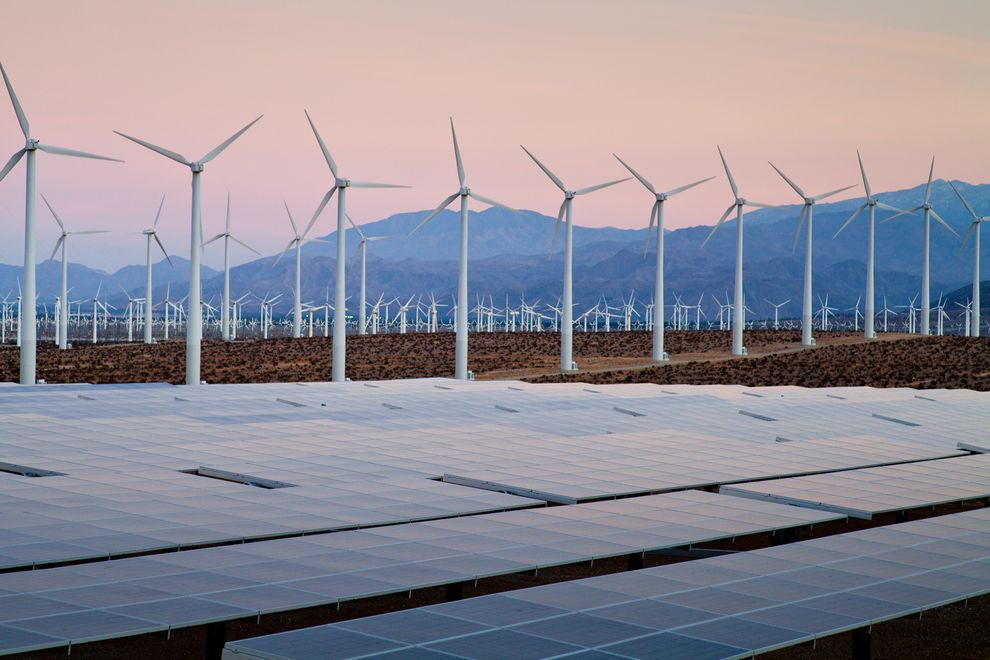President Obama Unveils New Climate Actions at Walmart Visit

Obama announced more than a half-dozen actions to support training for workers in solar power, require higher efficiency for industrial-quality equipment and appliances from escalators to walk-in refrigerators, adjust building codes to reduce emissions from new construction, and bolster energy efficiency in federal buildings through $2 billion in improvements.
The president’s new initiatives “will help cut pollution by more than 380 million metric tons of carbon, save businesses nearly $26 billion on their energy bills [by 2030], and support worker-training programs across the country,” said Dan Utech, a special assistant to the president on energy and climate change, during a conference call previewing Friday’s announcement.
The White House says the long-term savings of such measures will justify their upfront costs. The actions also come just days after the Executive Branch released the National Climate Assessment, a major report on the impacts climate change are already having on the country. (See “Federal Climate Change Report Highlights Risks for Americans.”)
Andrew deLaski, director of appliance standards at the American Council for an Energy-Efficient Economy (ACEEE), calls Obama’s new standards “good news for the environment.”
The actions “will make U.S. businesses and industry more competitive, strengthening the U.S. economy and creating jobs,” he said.
But Stan Cox, author of several books on energy and climate, said that Obama’s actions were likely “going to have a relatively small effect compared to the size of the problem.”
“I hope this is going to soften people up for something bigger later [such as new rules for power plant emissions that are expected in June], but it’s a difficult situation,” he said. “Because, despite what a lot of people say, if we really are going to make a big enough difference in the momentum of carbon accumulation, it will take sacrifice.”
Cox says that would require hard limits on emissions from power plants and other industrial activities as well as a decrease in overall consumption of material goods.
Right Choice of Venue?
The president announced the new efficiency rules from a Walmart in Mountain View, California, in Silicon Valley, where he has been on a fund-raising trip.
The president said Walmart was chosen to highlight the company’s use of solar energy, and to celebrate the fact that the specific store had replaced lightbulbs with LEDs, added charging stations for electric vehicles, and installed solar panels on its roof a few years ago.
According to Walmart, about 24 percent of the company’s total global energy use is sourced from renewable energy, when the contribution of renewables into the grid is factored in.
By the end of 2013, Walmart had more than 335 renewable energy projects in operation or under development around the globe, with the capacity to provide more than 2.2 billion kilowatt hours of renewable electricity annually, according to the company. Walmart also recently committed to sourcing 7 billion kilowatt hours of renewable energy globally by December 31, 2020.
But the environmental website Grist took issue with the choice of Walmart as a venue to discuss renewable energy, calling it “baffling and disconcerting.”
Walmart sources only 3 percent of the energy for its U.S. operations from renewables, according to the Environmental Protection Agency, Grist said.
That puts it far behind such retailers as Kohl’s, which gets 105 percent of its power from renewable sources; Whole Foods (107 percent); Staples (106 percent); and McDonald’s (30 percent), according to a list maintained by the Environmental Protection Agency. Overall in the U.S., about 2 percent of all power comes from renewable sources.
Kory Lundberg, a spokesperson for Walmart, told National Geographic that he thought the EPA’s 3 percent figure came from only a few states, and that the current total for the company’s U.S. operations “is higher.”
“Walmart is the largest onsite producer of solar energy in the U.S., and that’s our focus,” he added. “Some of the other guys pay others to do [solar energy], but we focus on how we can generate it and make it more viable.”
Walmart’s overall emissions rose 2 percent, or more than 500,000 metric tons, last year, Grist said.
For its part, Walmart says on its website that its efforts to use more renewable energy “are not only good for the environment, but they also keep prices low for customers.”
Collected:
http://news.nationalgeographic.com/

